Summer skies and trees heavy with fruit paint a picturesque backdrop to the red-tiled sprawling palace with brilliant white walls at Kilimanoor, about 33 km from Thiruvananthapuram. Built in the native architectural style of Kerala, quietude envelopes the palace with wide verandahs, courtyards and long corridors.
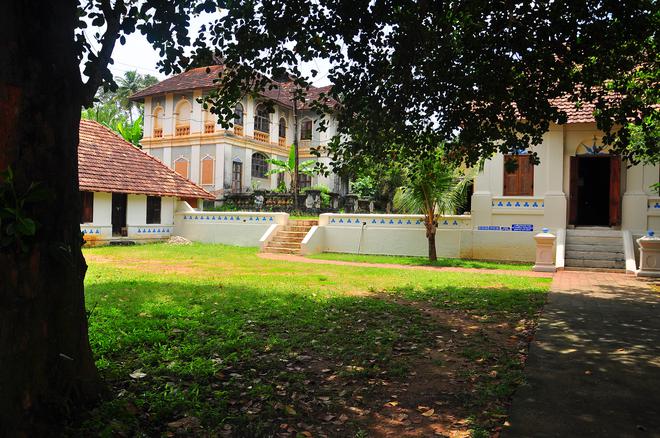
It was in this rambling palace that eminent artist Raja Ravi Varma was born on April 29, 1848, to Ezhumavil Neelakanthan Bhattatiripad and Uma Ambabayi Thampuratti. As a child, the little prince liked to draw and doodle on the walls with charcoal. Till he was taken to Thiruvananthapuram at the age of 14 by his uncle Raja Raja Varma, to present him before the then monarch of Travancore, Maharaja Ayilyam Thirunal, he stayed in the palace and had his education under the watchful eyes of his uncle who also taught him the basics of painting.
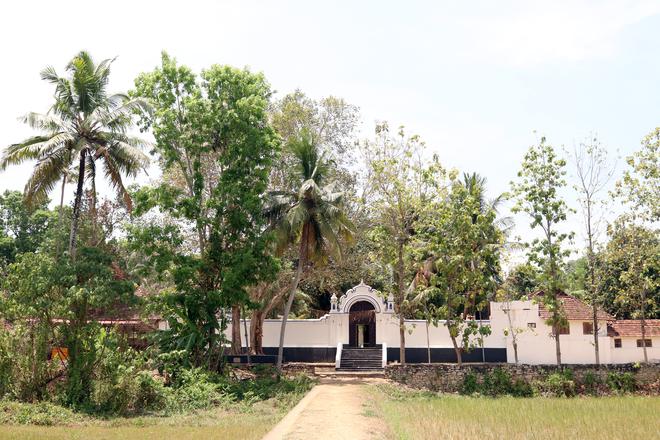
It is easy to imagine the palace as it was at the turn of the century. Little seems to have changed and the only outward sign of modernity is a bright yellow school bus parked on the Palace grounds.
The majestic archway entrance to the palace leads to a sunlit room with an easel in a corner, near a window with large glass panes. Overlooking the flowering garden and emerald green paddy fields, the studio commands a panoramic view of the surroundings.
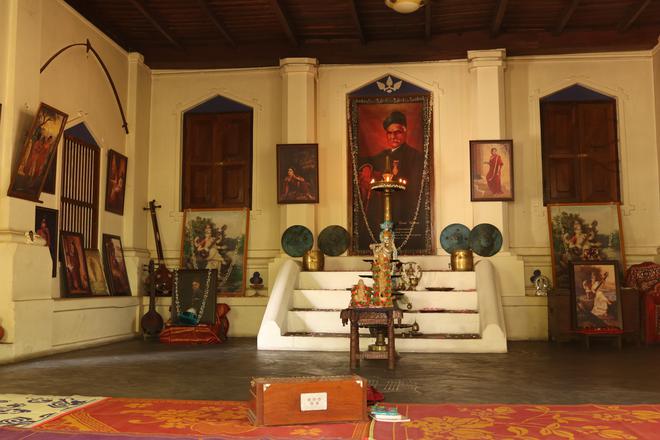
It was here in this serene ambience that artist Raja Ravi Varma painted some of his masterpieces. The studio, called the Chitrashala, which he designed, was built around 1875, as an extension of the Pazhayamalika, where he used to reside. The north-eastern corner of the studio where a dusty, aged easel stands has huge glass windows through which sunlight floods the room.
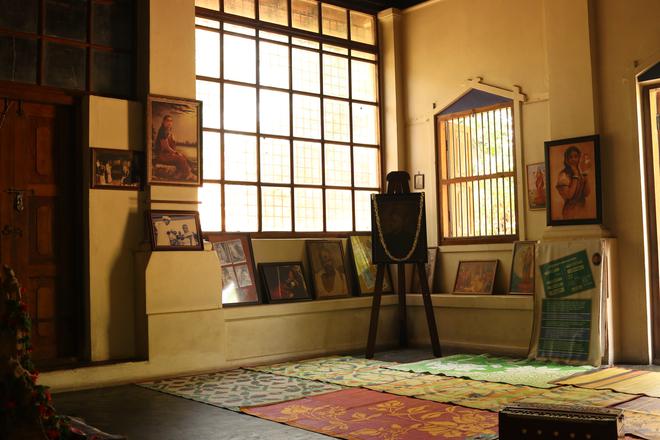
It is said that Ravi Varma used to stand here from dawn to dusk, painting in the natural light. His disciple and younger brother Raja Raja Varma used to be with him as he sketched outlines on canvas and planned a painting. The studio used to bustle with his assistants and students who used to help him complete his works. A photograph in the studio shows the artist relaxing on a low bed, listening to recitations from the epics and other religious texts.
At present, there are only prints of some of his famous paintings, a few photographs, a majestic portrait of the artist and a marble bust of his younger sister Mangala Bayi. Paint brushes and a palette are kept near the easel.
Diverse flora
It is a riot of colours outside the studio. The diverse flora surrounding the palace influenced the masterpieces of the royal artist. Fragrant jasmine and creamy white frangipani, grand banyan trees, swaying coconut palms, blood-red hibiscus flowers, broad banana leaves and delicate tendrils of vines added texture and influenced his palette of colours.
The studio leads to a long corridor and a nadakashala where Kathakali recitals, Koodiyattam and concerts used to be held. “Ravi Varma’s painting based on Hindu mythology may have been influenced by the powerful scenes that he saw in Kathakali plays staged here,” muses Rama Varma Thampuran, secretary of the Kilimanoor Palace Trust, which looks after the upkeep of the studio and the Palace.
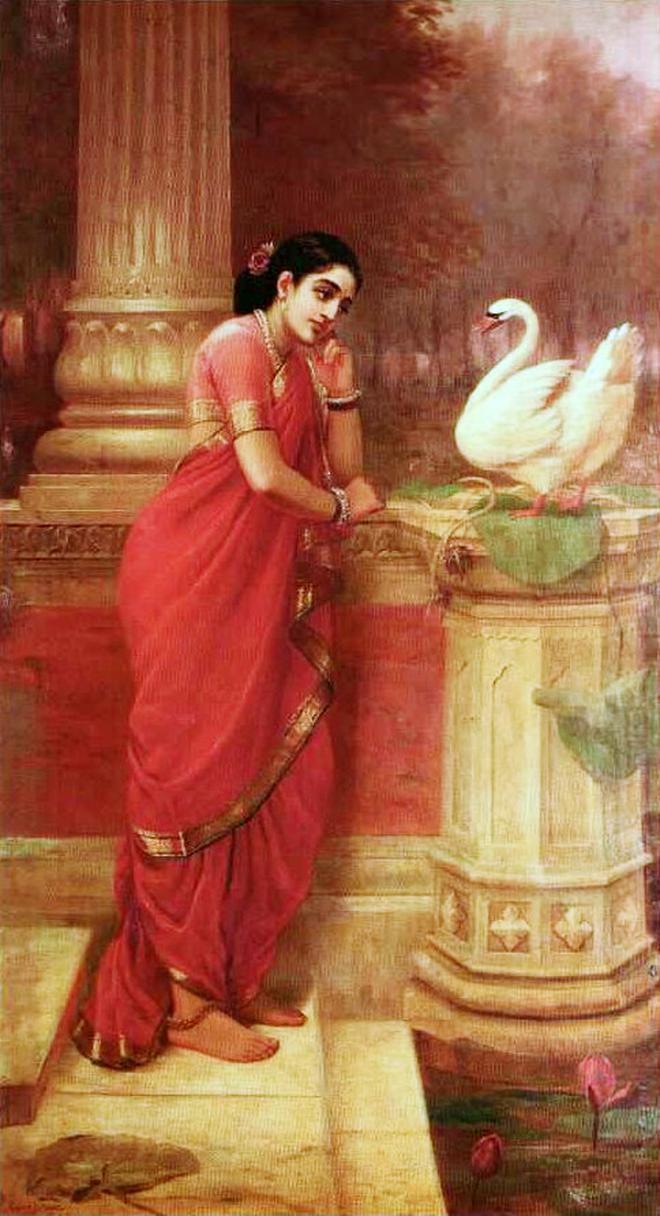
He points out that Ravi Varma was a scholar well-versed in Hindu religious texts and the epics. “He is said to have composed poems in Sanskrit and Manipravalam. Moreover, his paintings of Hindu gods and goddesses were based on verses describing them. That shows how familiar he was with the verses. Without a close reading of Kalidasa’s Shakunthalam, or the Mahabharatha and the Ramayana how could he have painted such magnificent paintings based on the play and the epics?” he points out.
After Ravi Varma’s younger brother and close associate Raja Raja Varma passed away unexpectedly, the artist was devastated and is said to have decided to return to his ancestral palace.
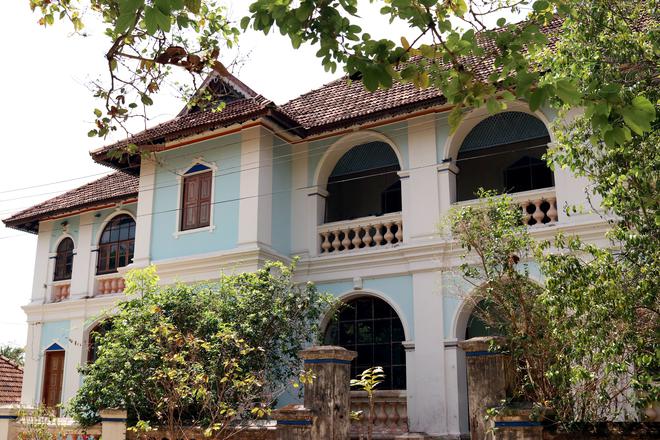
It was his great desire to have an art gallery in Thiruvananthapuram but the then administration did not take his plea seriously. Thampuran says that towards the end of his life, the eminent artist who had admirers in many far-flung corners of India wanted a gallery at Kilimanoor to house his works. Next to the structure housing the studio is a more recent building, Puthenmalika, which Ravi Varma had built with the money he had received from the sale of his works. “It was supposed to be the gallery to exhibit his works and also a place for his royal friends to stay when they were supposed to come here for his 60 th birthday. Unfortunately, he passed away on October 2, 1906 before his wish could be materialised,” says Thampuran.
After the Sri Chitra Gallery was opened in Thiruvananthapuram in 1935, the Kilmanoor Palace gave the gallery 100 to 120 works of the artist, including working sketches, which were there at the Chitrashala, as a permanent loan in 1941. All that is remains in the Palace is a half-finished painting of a Parsi lady, adds Thampuran.
However, even today, the legendary artist’s spirit seems to fill the space. Every tree and room seem to have some significance in the life of the artist who spend much of his life travelling to different places in India in connection with his work.
Where can you see collections of Ravi Varma originals?
Sri Chitra Art Gallery in Thiruvananthapuram
Laxmi Vilas Palace in Vadodara, Gujarat
Jagmohan Palace Art Gallery, Mysore
The lush greenery around the palace includes sacred grooves and temples. Family stories have it that his mother was possessed by a spirit while she was going around a banyan tree after worshipping at a temple. Family lore has it that the child was blessed by the spirit.
While taking us for a walk around the sprawling compound, Thampuran points out the banyan tree that towers over us. Dry leaves rustle and crumble as we walk around this place filled with trees, shrubs and creepers. Near the banyan is a temple where she was exorcised of the spirit.
“Umabayi herself was a scholar and poet who knew the medicinal values of many plants and herbs. It is quite possible that she may have passed on her love for Nature to her eldest son,” believes Thampuran.
Artistic legacy
He asserts that despite financial constraints the Palace Trust has taken all care to preserve the great artist’s legacy. “We want to conserve the birthplace of Raja Ravi Varma and his studio for posterity. As far as I know, the only other studio where Ravi Varma worked is in Vadodara. While his paintings command crores in the international market, it is important to understand that this was where the great artist began his artistic journey.”
The Palace Trust has drawn up elaborate plans to celebrate his birth anniversary on April 29. Governor Arif Mohammed Khan will unveil the unfinished painting of the Parsi Lady and a portrait of Thriketta Thirunal Uma Bayi Thampuratti.







